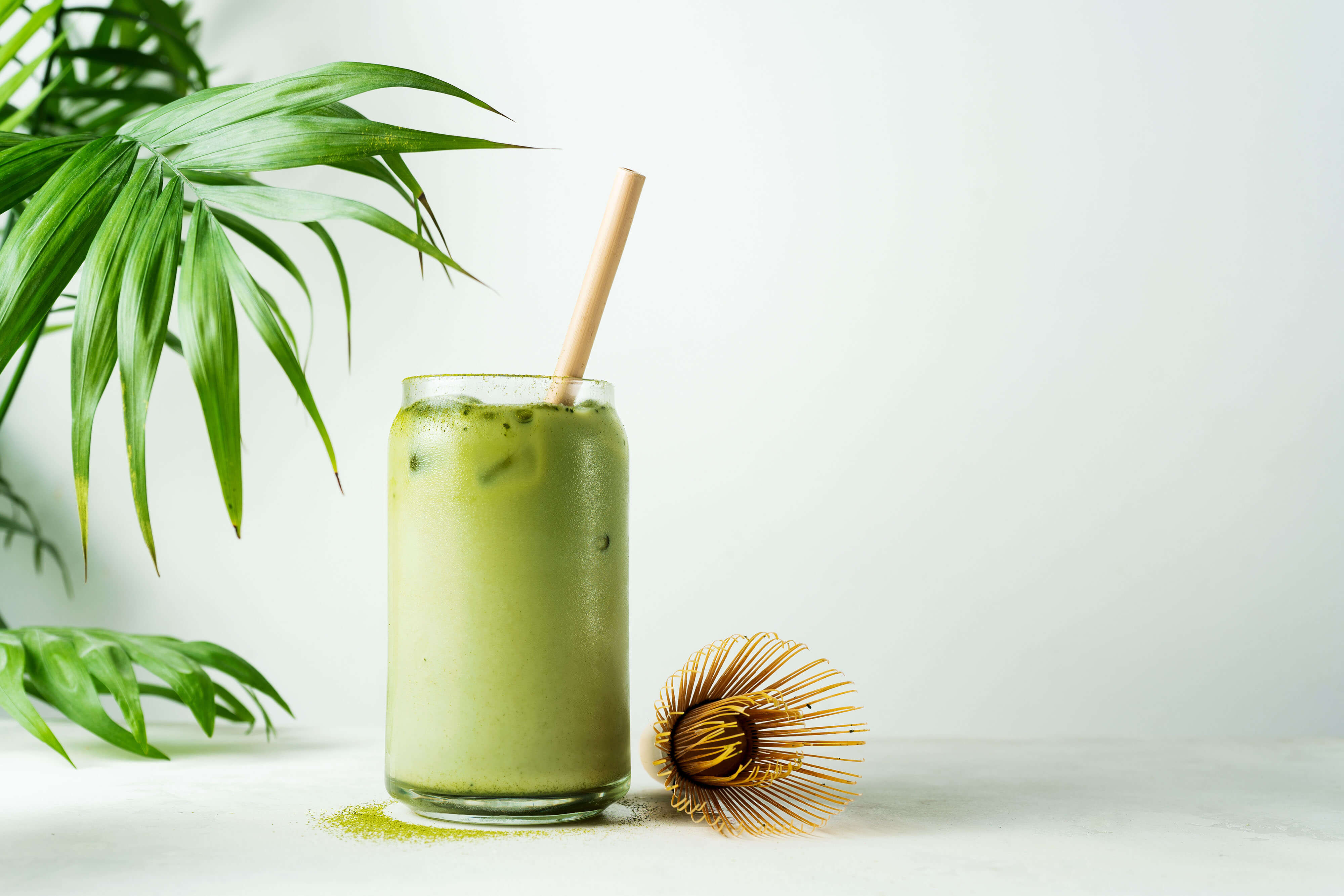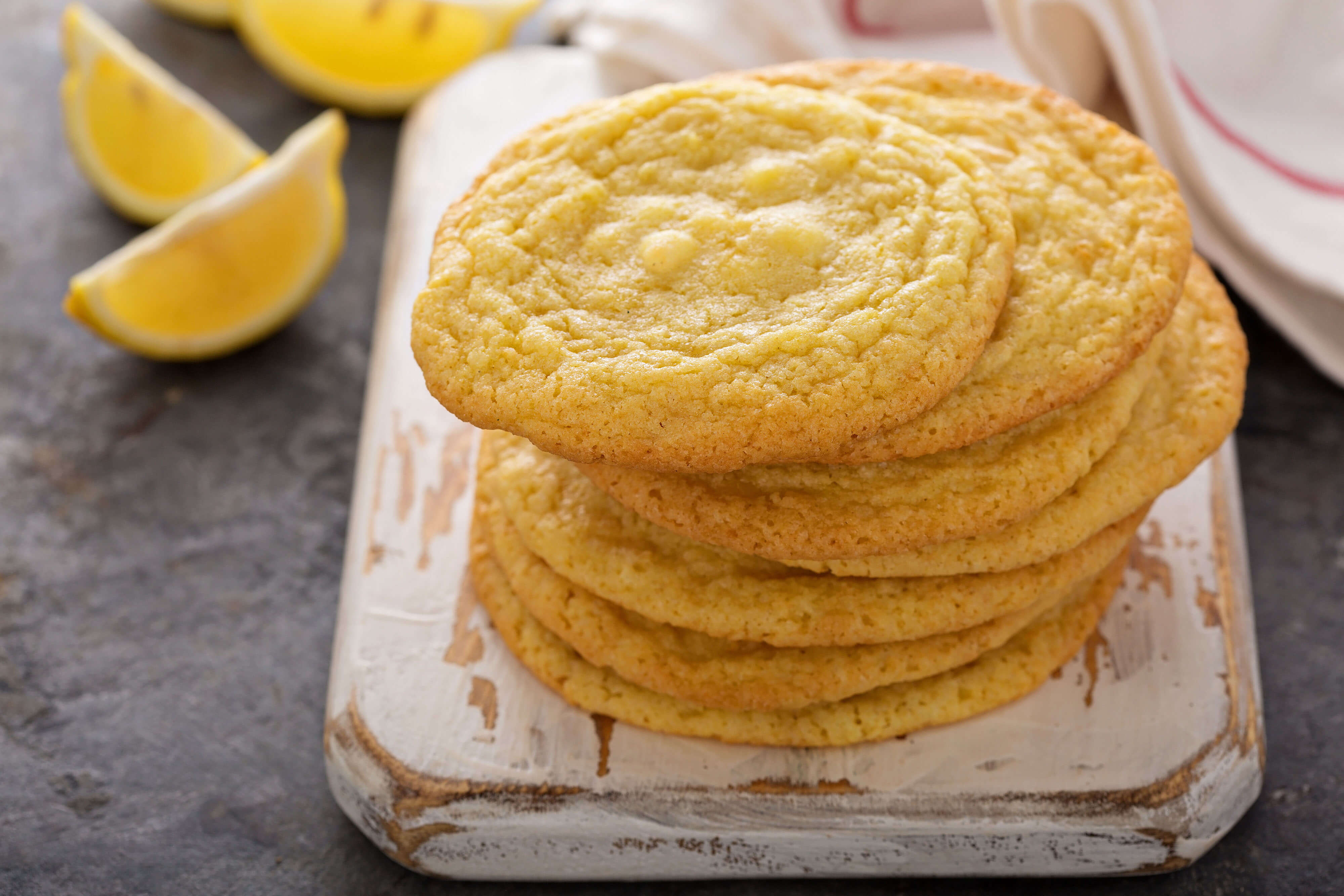Everything You Want to Know About Oolong Tea

Oolong tea -- likely best known as the tea that’s most often used as a pun as in “move oolong, nothing to tea here” -- is actually a complex tea, somewhere between a black tea and a green tea, and one of the most fascinating teas made. The flavors can vary greatly and are often surprising to the senses. We predict it won’t be [t]oolong before you are a fan as well!
What Exactly Is Oolong Tea?
As mentioned above, oolongs are something of a hybrid and sometimes referred to as brown or blue tea. Derived from the Camellia sinensis plant just like other teas (with the exception of herbals), it’s the oxidation process that makes it uniquely an oolong tea. Their singular methods of production offer up a variety of tea-drinking experiences, from light and floral to dark and rounded, creamy to effervescent. Oolongs are teas that surprise and delight.
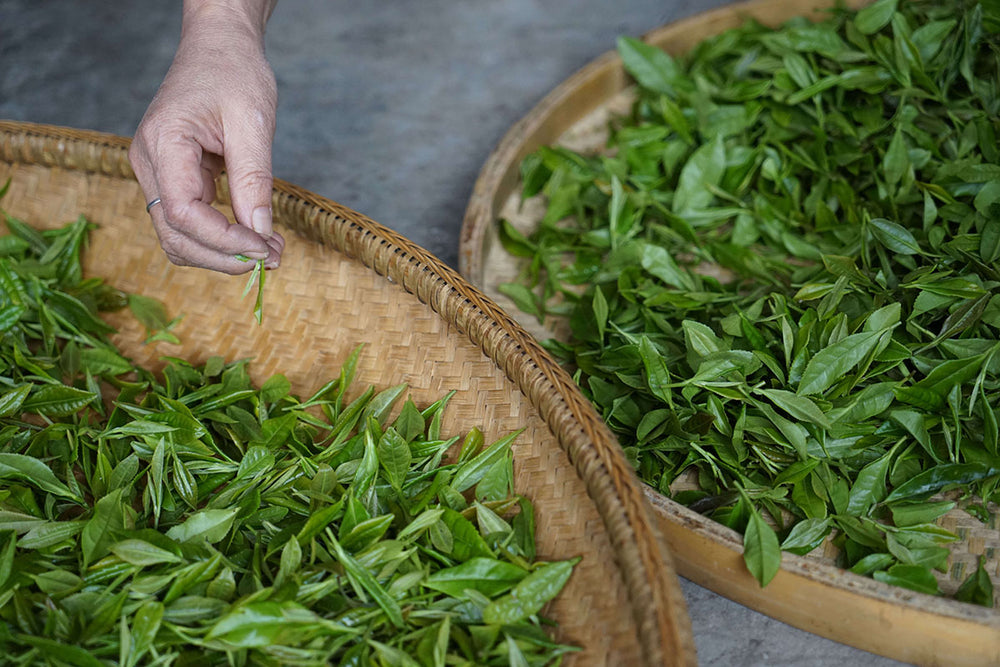
How Is Oolong Tea Made?
Oolongs are not fixed like green teas (fixing allows the leaves to retain their green color). Rather, oolongs, just like black teas, are oxidized. Oxidation allows the leaves to darken.
However, oolongs oxidize more slowly than other teas. As a result, they have the most complex, mellow flavors. Oolongs start to oxidize when they wither because tea makers gently fluff the leaves on tarps in the sun. This fluffing qualifies as a very light rolling, triggering oxidation along the edges of the leaves. Indeed, the gentle agitation is what gives oolong leaves their characteristic red tinge. With a head start on oxidation, the edges turn a darker red than the rest of the leaf.
After withering, the leaves are rolled incrementally in an elaborate stop-and-start oxidation that lasts for six hours or more. This gradual oxidation prolongs the withering, allowing for the creation of yet more aromatic compounds. The final flavors and aromas depend entirely on the amount of time the oolongs are given to wither and oxidize. Some oxidize roughly 25 percent; lower oxidation produces citrus and floral aromas of lime, jasmine, and gardenia. Higher oxidations of 40-75 percent develop more of the apricot and peach flavors typical of (warning: here come big science words) carotenoid degradation, the later-stage transformation of the pigment carotene into the apricotlike compounds ionones, damascones, and damascenones. Who said learning about tea isn’t highly educational?
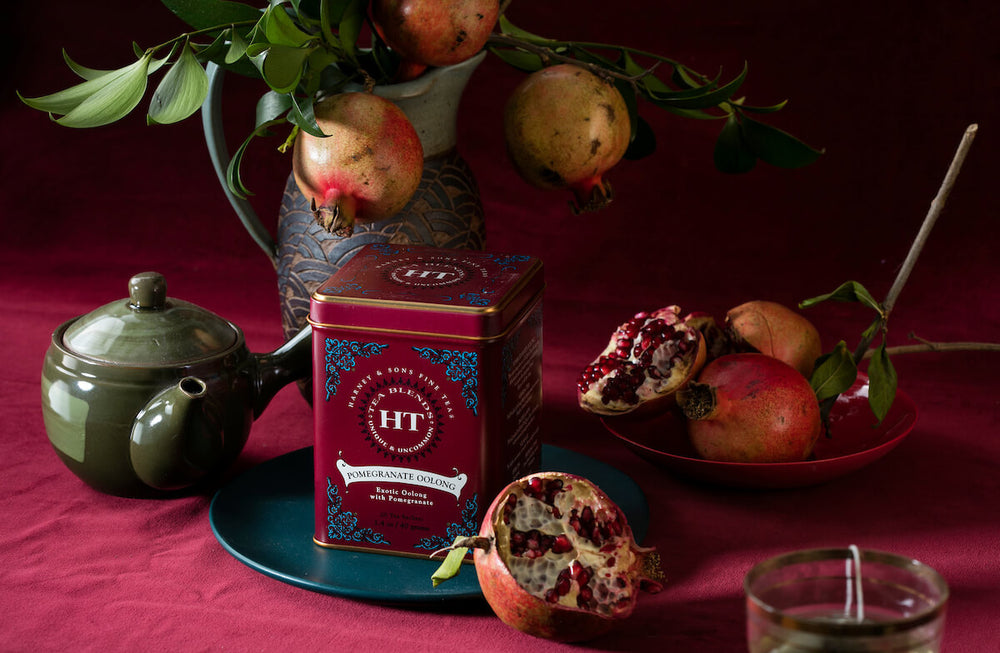
Where Does Oolong Tea Come From?
Oolongs likely first appeared within the last 300-400 years in China’s Fujian province, in the Wuyi Mountains. Presumably frustrated with the quality of their green teas, tea makers there found something to catch the attention of the emperor’s tribute board when they decided not to fix their green teas but to let them wither and darken to black tea. Later, they figured out how to halt the oxidation by degrees, making the teas ever lighter in color. The results were magical.
As this new tea’s reputation spread, so did its growing techniques. Oolong making spread south to the mountains in Guangdong province. Oolong makers from Fujian also began immigrating to Taiwan. (Taiwan lies directly across the Taiwan Strait from Fujian, and most of its residents speak the same Fujian dialect of Chinese.) Today, the best oolongs still come from China and Taiwan, while the Taiwanese have elevated the oolongs in recent years by optimizing packaging and transporting of these delicately flavored tea leaves. Capitalizing on the benefits of vacuum packaging and air shipping, they did away with the heavy firings once required to preserve and transport teas, creating oolongs of terrific lightness and nuance.
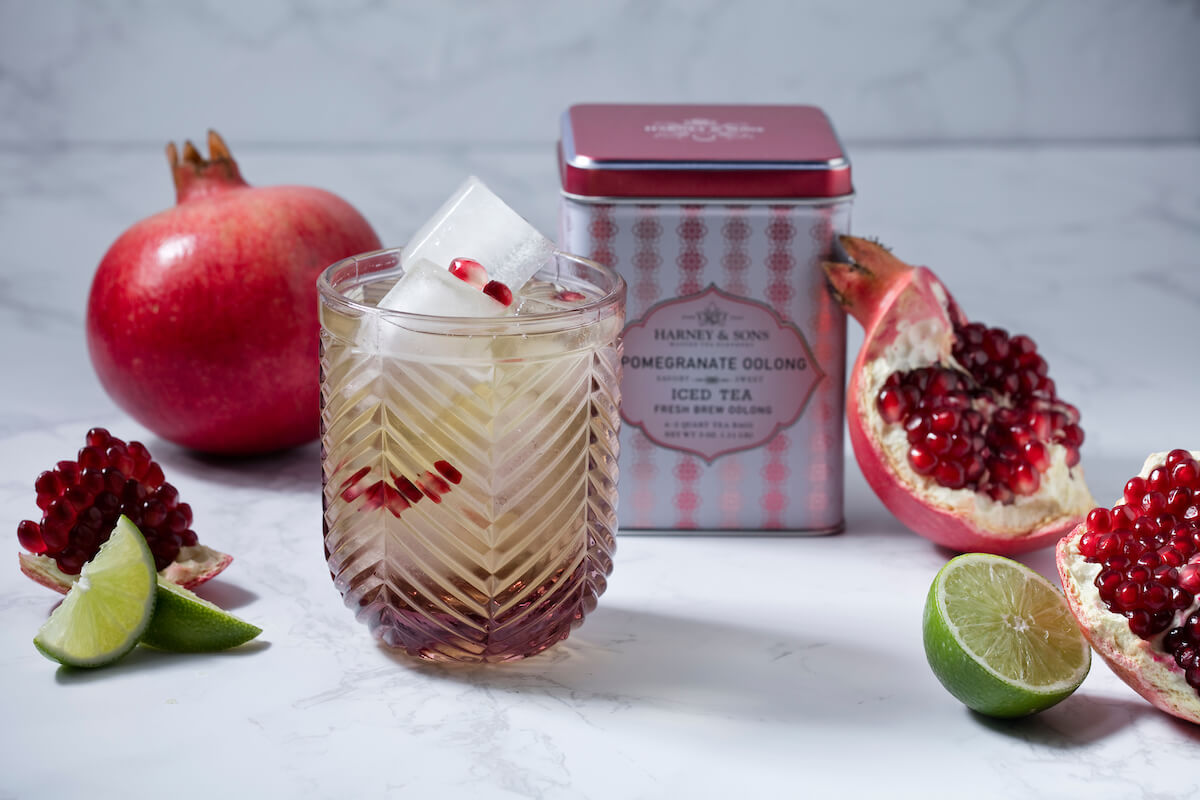
How Does Oolong Tea Taste?
A sip from a light oolong can taste like a walk through a garden packed with lilacs, gardenias and jasmine. A darker oolong can smell like a bakery right after it’s finished a round of peach pies. From their own cultivar of Camellia sinensis and their singular methods of production, oolongs take on an astonishing array of flavors and aromas. Many oolongs are creamy, their liquor literally coating your mouth like fresh cream. Others are almost effervescent, practically fizzing like Champagne. Their variety of colors is lovely to behold, from the pale greenish yellow liquor of Ti Guan Yin to the dark orange brew of Fenghuang Shui Xian.
Types of Oolong Tea
We offer three categories of oolong teas, sourced from the world’s best producers:
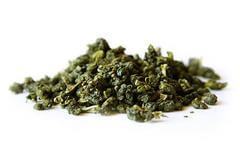
These oolongs are sourced from where it all started. We carry several varieties from some of our favorite tea makers in Fujian.
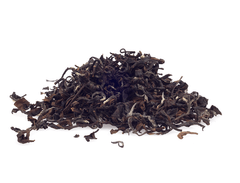
China may have been the first to make Oolongs, but the Taiwanese did a wonderful job of picking up where the Chinese left off, and then some. Here, beautiful, light & dark oolongs are made.
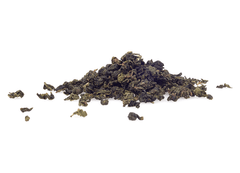
We use potent, delicious oolongs blended with unique flavors to enhance their inherent characteristics.
Ready for the tea experience you’ve been oolonging for? Here are some classic oolongs to try to get the full experience of their unique flavors and aromas.
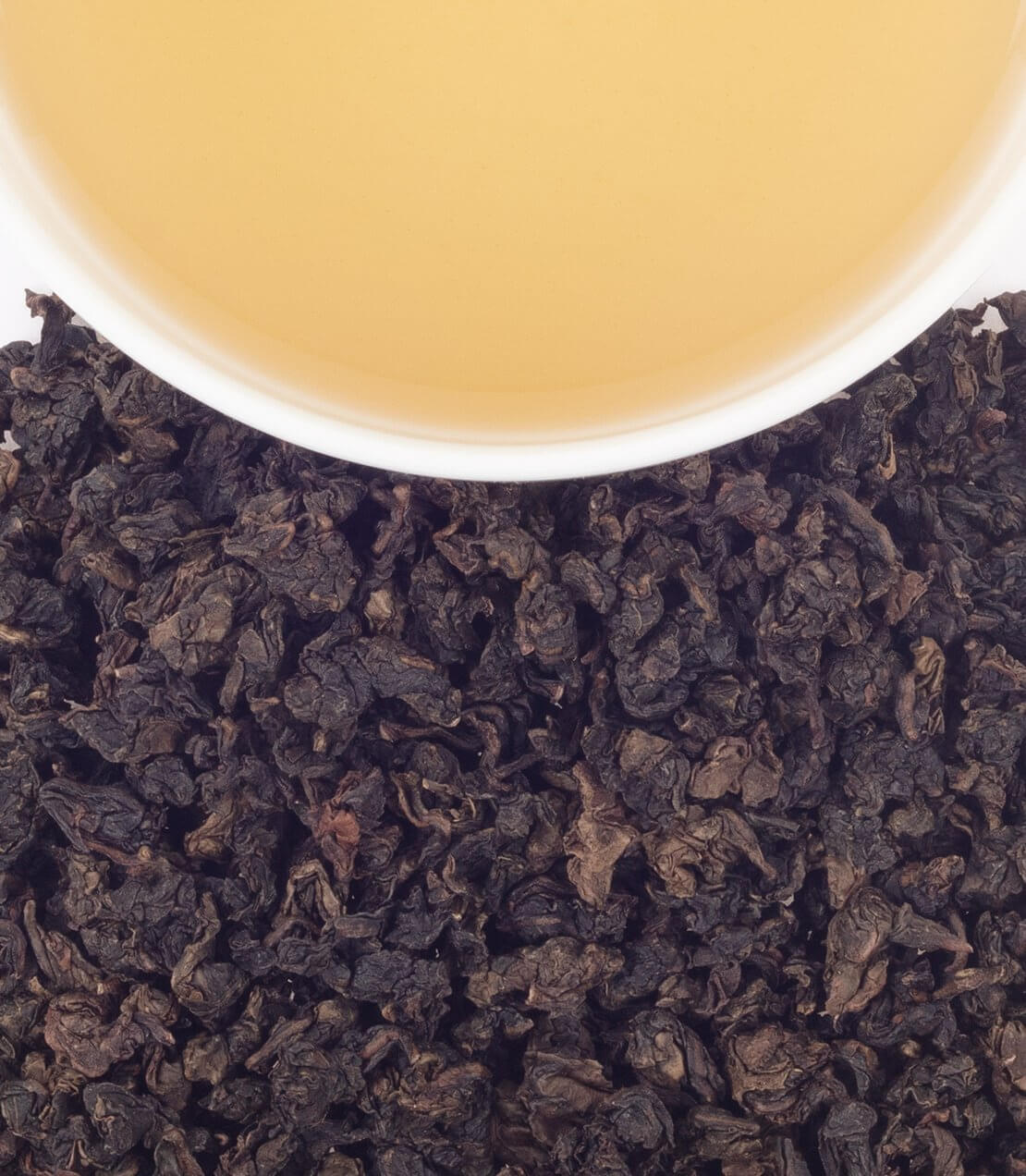
Ti Quan Yin is one of the most famous teas in China. It is known for its rolled oolongs that are greenish. Traditionally, these teas were rolled in something like a pillowcase, and the men would roll it with their feet using their body weight to roll the big leaves into tight balls. The tea was then dried over smoldering charcoal. Today, machines slowly roll the pillowcases to make the balls, and our top Ti Quan Yin has been dried in an electric oven, so the bright flavors are there as are the aromas and flavor of cooked sugar.
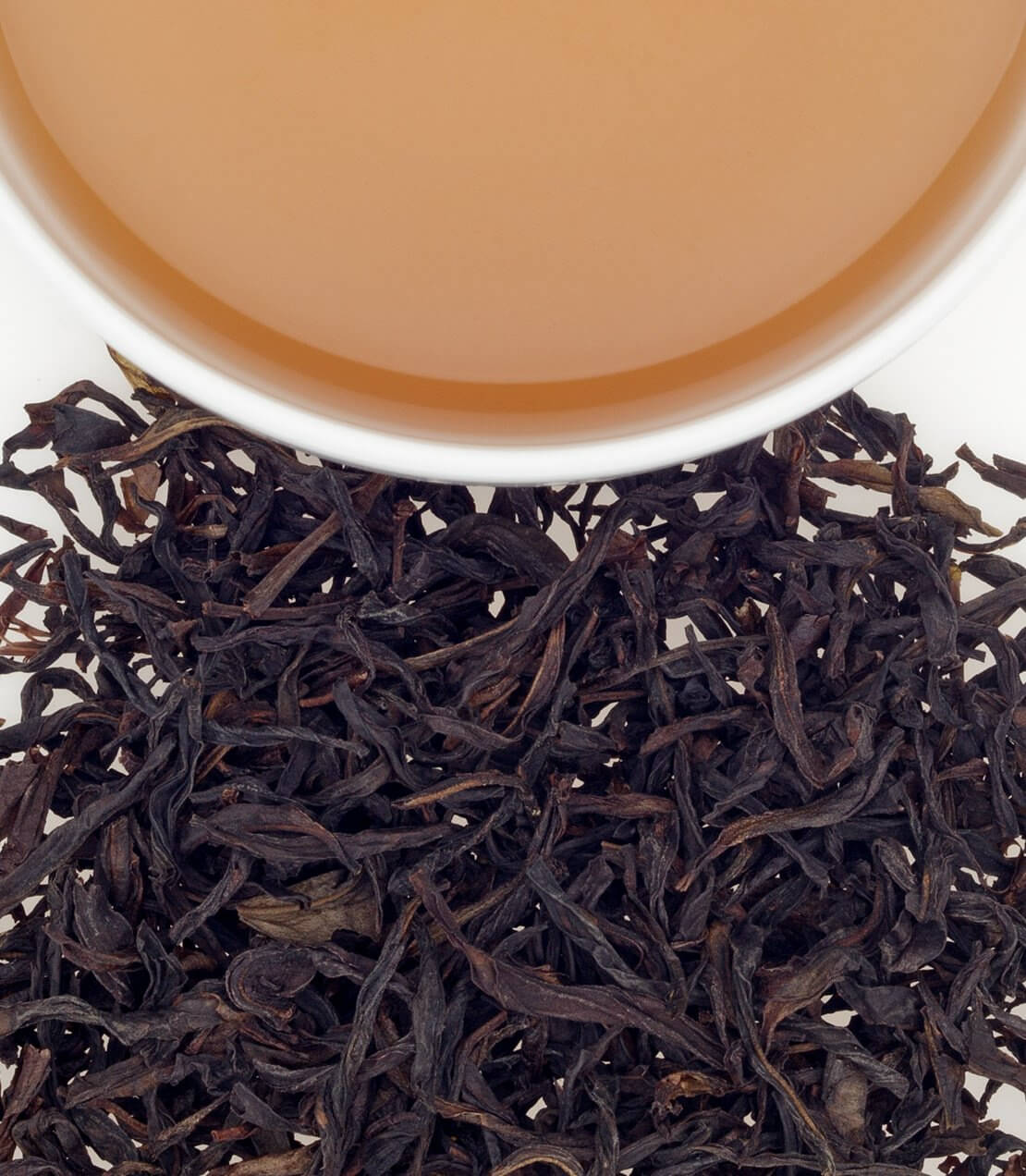
This delicious and rare oolong tea is widely regarded for its intense peach and spice flavor. We love visiting the artisans high above the city of Chaozhou where we get to see how they transform the big leaves into twists of brown oolong with hints of russet. The stone fruit aroma is of peach nectar, and the flavors of the Milan variety almost fizzes like a Bellini.
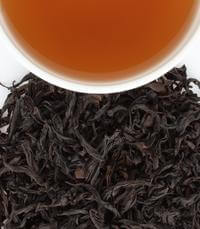
While the stories vary, legend says that several hundred years ago a magistrate of the Ming dynasty fell ill while visiting the Wuyi Shan area. He was nursed back to health by drinking this tea. As a token of thanks, he hung his red robe on the gate to the tea garden, granting the tea both official approbation and its name, Big Red Robe. Today, Da Hong Pao growers claim that three very old bushes outside Wuyi Shan city are the same ones that served as a coat rack for the magistrate’s robe. They insist that every Da Hong Pao bush was propagated from them. Whether or not the legend is true, the teas do provide an exquisite example of the more traditional, darker style of oolong. This tea is done in the old-school way of slowly drying it over charcoal, resulting in toasty flavors mixed with stone fruit. Just what the doctor ordered.
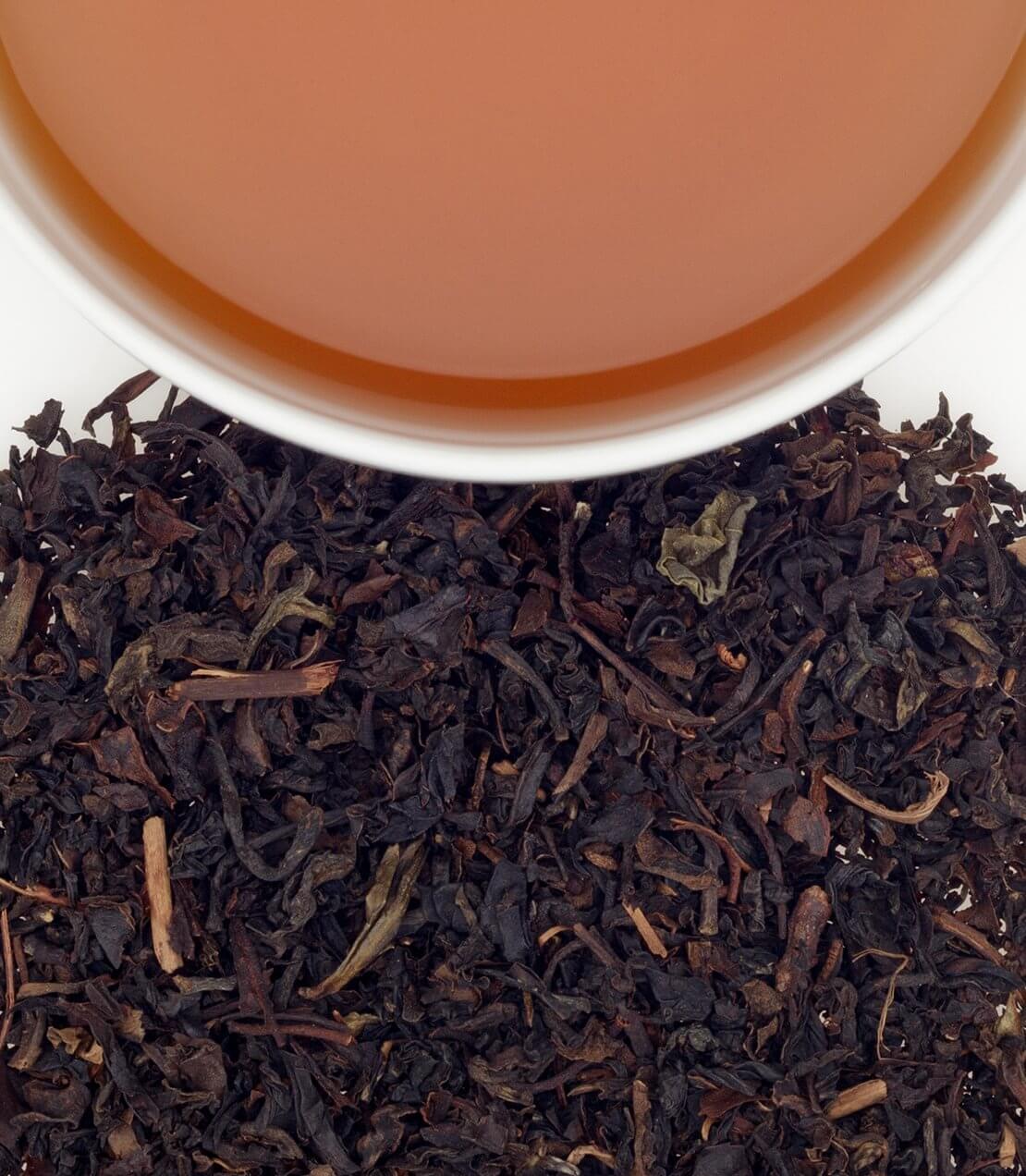
We have the Taiwanese to thank for this popular oolong tea. Brisk, nutty, and somewhat fruity, Formosa Oolong offers a history lesson as much as it helps cultivate your oolong palate. The tea was once considered the Champagne of teas and the standard for oolongs in the U.S. In the last two decades or so, other lighter and more aromatic oolongs have outpaced it so that it is now made by only a handful of Taiwanese tea makers. It is oxidized to about 75 percent, so it is darker than most oolongs and has nutty, toasty notes with subdued peach flavor.
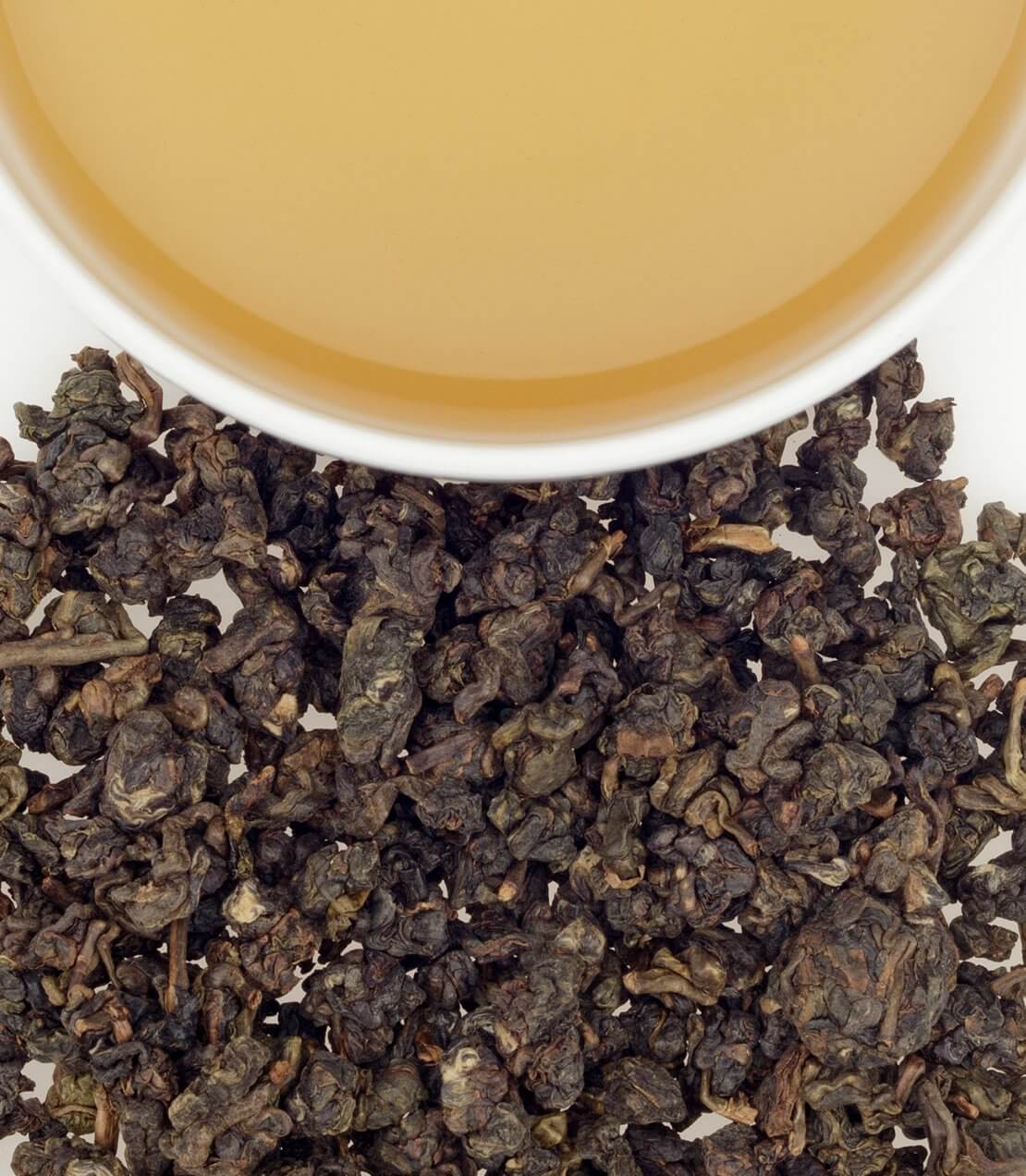
Dong Ding is a lovely example of a creamy, lemony oolong slightly darker and slightly more restrained. It is one of Taiwan’s most famous and beloved oolongs, and likely its first. Full of dark, complex flavors that tantalize the mouth with smoky overtures.
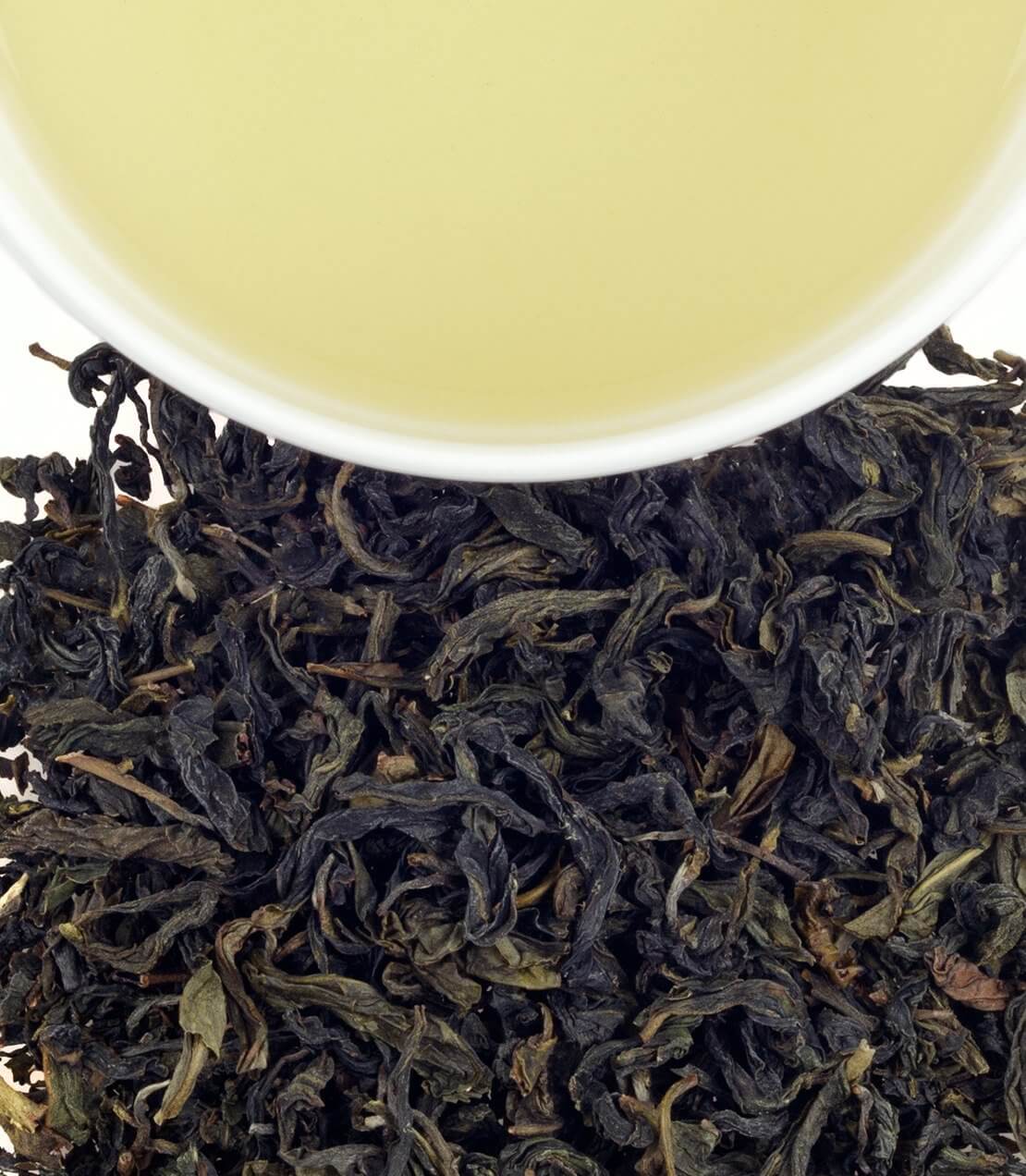
When we buy a Wenshan Baozhong, we look for something that reminds us of Gardenias: lovely, lilting floral notes in the aroma, and good body. It is always a joy to drink!
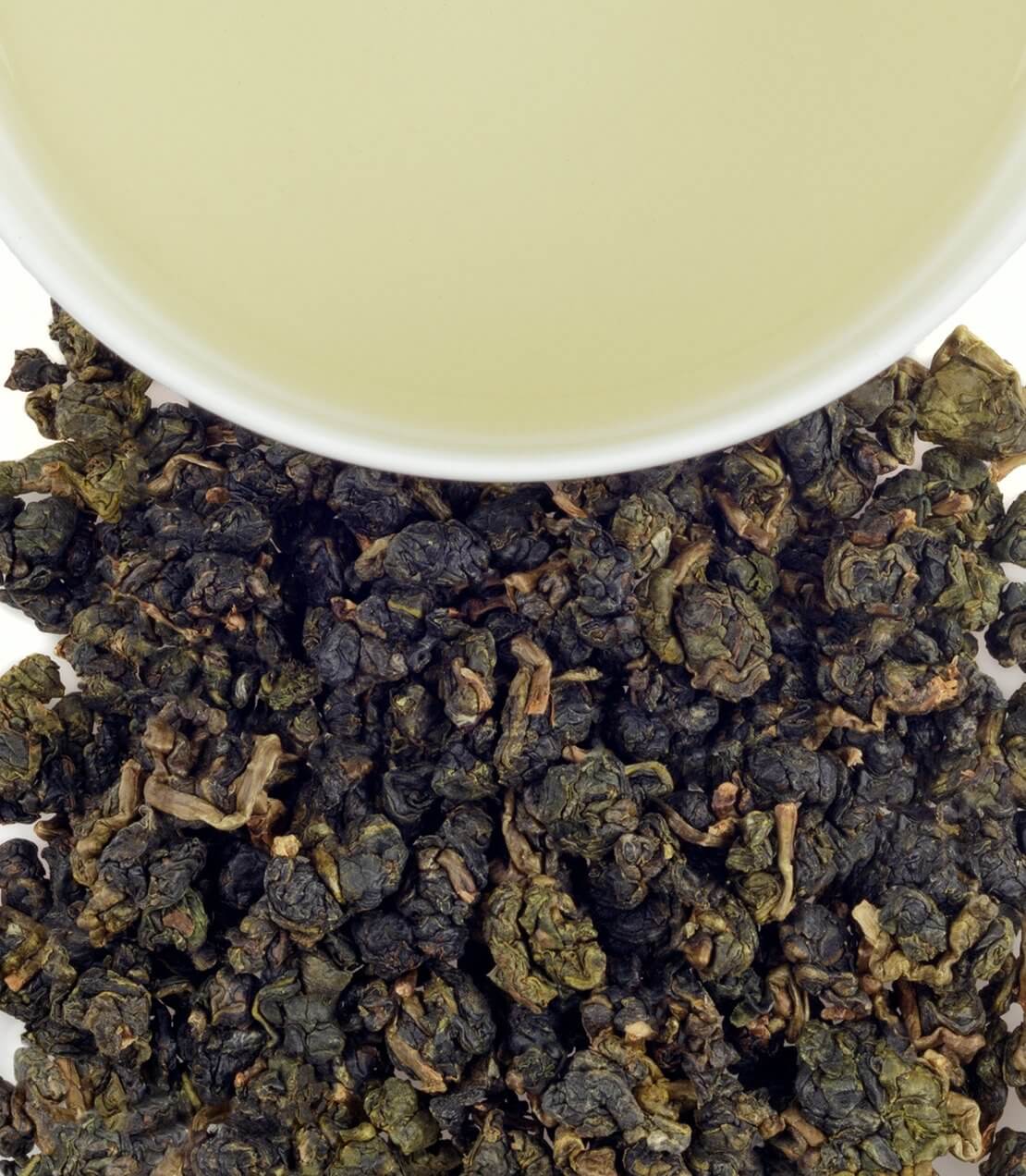
When we buy a Wenshan Baozhong, we look for something that reminds us of Gardenias: lovely, lilting floral notes in the aroma, and good body. It is always a joy to drink!
How Much Caffeine Is in Oolong Tea?
It is quite difficult to gauge how much caffeine is in a cup of tea because it depends on so many factors: the tea itself, how much is used in a cup, and how long it is brewed. Oolong’s caffeine content, however, is much like its production -- somewhere between green tea (lowest caffeine) and black tea (middle caffeine). In general, for those keeping score at home, tea contains less caffeine than a cup of coffee.
During the brewing process, there are ways to mitigate the amount of caffeine in your cup of oolong tea.
*While these caffeine levels hold true generally, caffeine in tea varies from plant to plant and within tea types.
To keep caffeine levels low, consider the following:
- Brew your tea properly with the correct amount of water, temperature and brew time.
- Use loose leaf tea. Teabags tend to contain smaller, cut leaves resulting in a faster caffeine extraction.
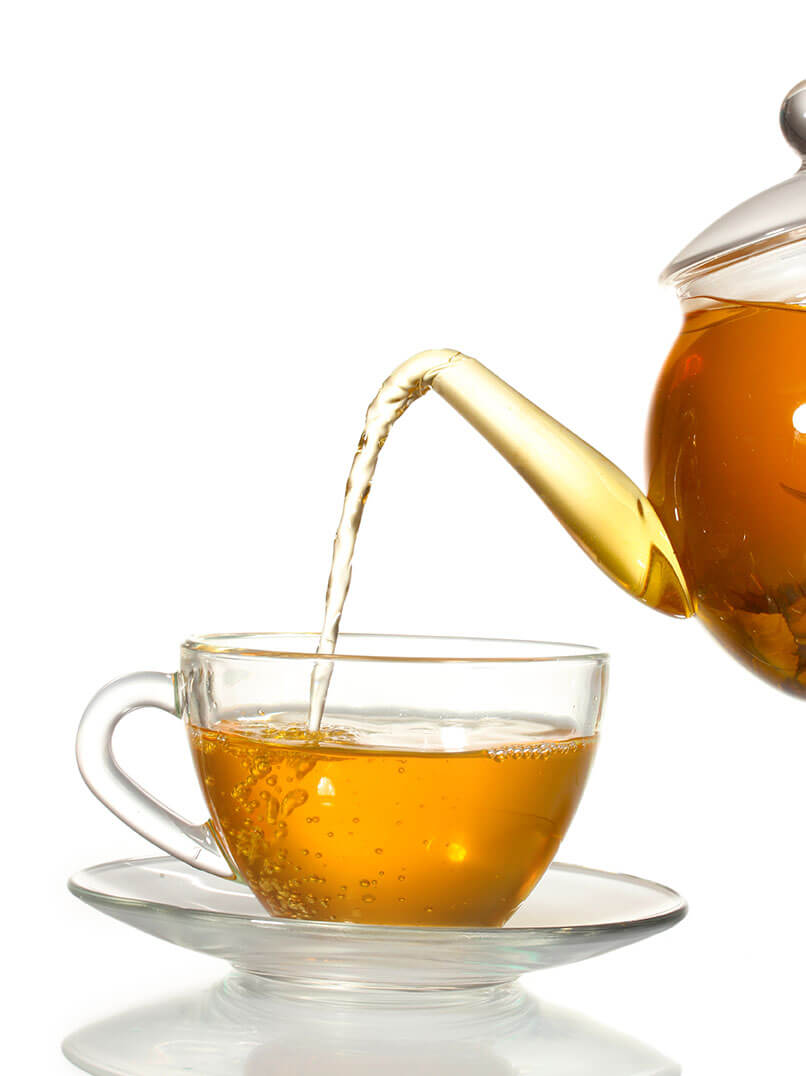
How to Brew Oolong Tea
- Preheat a teapot by pouring boiling water into it, raising the temperature of the teapot to at least 180°.
- Discard the water. In your teapot or filter, add 1 teaspoon of loose tea for each cup of tea you're brewing.
- Prepare the water to a temperature between 180°F-212°F, but never over the boiling point. The optimal water temperature depends on the oxidation level of the oolong tea leaves. For lighter, greener oolongs, stay on the lower temperature side. For darker, blacker oolongs, you can bring the water temperature higher, up to the boiling point.
- Pour the fresh, hot water over the tea or tea bag. This super-saturates the tea, allowing the perfect extraction of the flavor. Let the tea steep for 3-4 minutes.
- Pour the tea through a strainer into the cups.
Oolong teas have a wider brewing temperature range than other tea varietals. Oolong tea is not as delicate as green or white teas, but also does not require as much heat as black teas to bring out its fragrant flavors. Our wide offering of unique oolong tea blends results in different optimal temperatures, with lighter oolongs tasting brewed around 180°F and darker oolong tea flavors benefitting from a higher temperature at 212°F. You can use electric water-dispensing pots to heat water to exact temperatures, or you can insert instant-read thermometers to check water temperature prior to pouring over your oolong tea leaves.
Oolong tea leaves can steep anywhere from 3-4 minutes. Each specially selected variety and each drinker’s palate will dictate the proper brewing time. Observing both the tea liquor and body will help you gauge whether you have brewed your tea for the correct amount of time. If you’re looking for a stronger cup of tea, it’s best to increase the amount of tea used instead of increasing the brewing time.
Unlike most teas, oolongs can actually improve with multiple brewings. Both the Chinese and the Taiwanese like to drink oolongs gong fu style, brewing the tea in several rounds, using a small clay pot, then pouring the tea out into tiny ceramic cups and sipping it with six or seven friends.
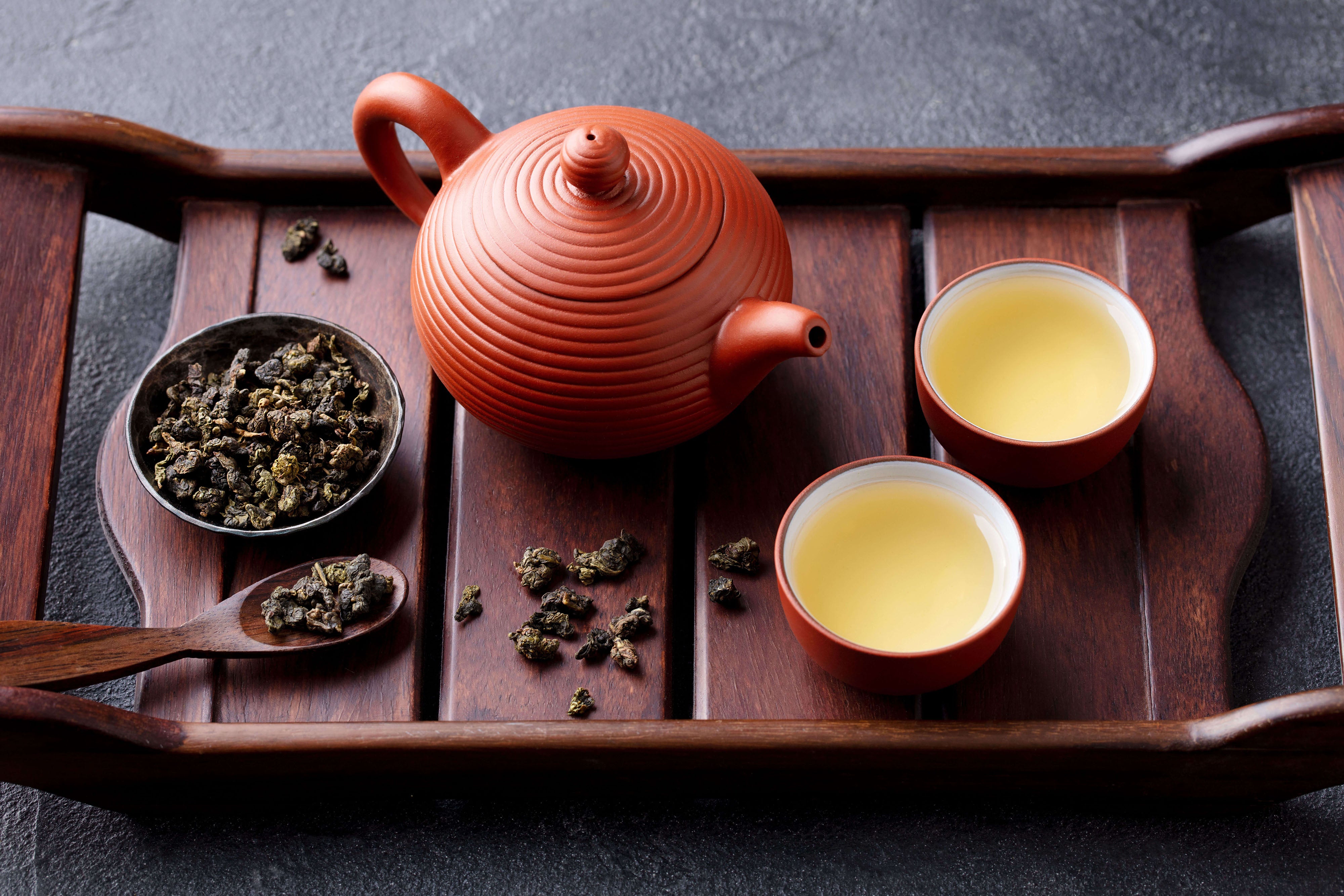
To brew an oolong gong fu style:
- Fill a small teapot with about 1 ½ to 2 tablespoons of tea.
- Rinse the leaves with lukewarm water, then brew them for 1 minute.
- Pour out the tea into small cups, then start a fresh pot with the same leaves while you drink the first round.
- Brew each subsequent pot for an additional 30 seconds. The flavors and aromas will continue to evolve through five to seven rounds before fading.
If you don’t have six or seven friends, don’t fret. You can enjoy oolong tea the traditional way, one cuppa at a time, while you contemplate your lack of friends and dust off your social media accounts.
How should I store my oolong tea?
Storing oolong tea is no different than storing all types of tea. Our tea tins are airtight, keeping out things tea doesn’t like such as moisture, oxygen, absorbable odors, and light. We’ve got all kinds of helpful tips for storing tea and keeping it fresh in our Does Tea Go Stale? blog post. When properly stored, oolong teas have a fairly long shelf life, certainly more so than some delicate green or white teas. In general, however, we recommend you drink your tea instead of keeping them tucked away in a tea cabinet -- they’re made for enjoying!
Oolong tea health benefits
While we know that tea has many benefits due to antioxidants, polyphenols, vitamins, minerals and other naturally good-for-you properties, many health claims about the medical wonders of tea have not been scientifically proven. That said, these beneficial properties can have a positive impact on your overall health. Oolong teas, in particular, have been associated with possible increased metabolism and weight loss, although this is again not a scientific claim.
Other possible health benefits include boosting heart health, improving cognitive function, good for your digestive tract, reduces inflammation and helps you destress.
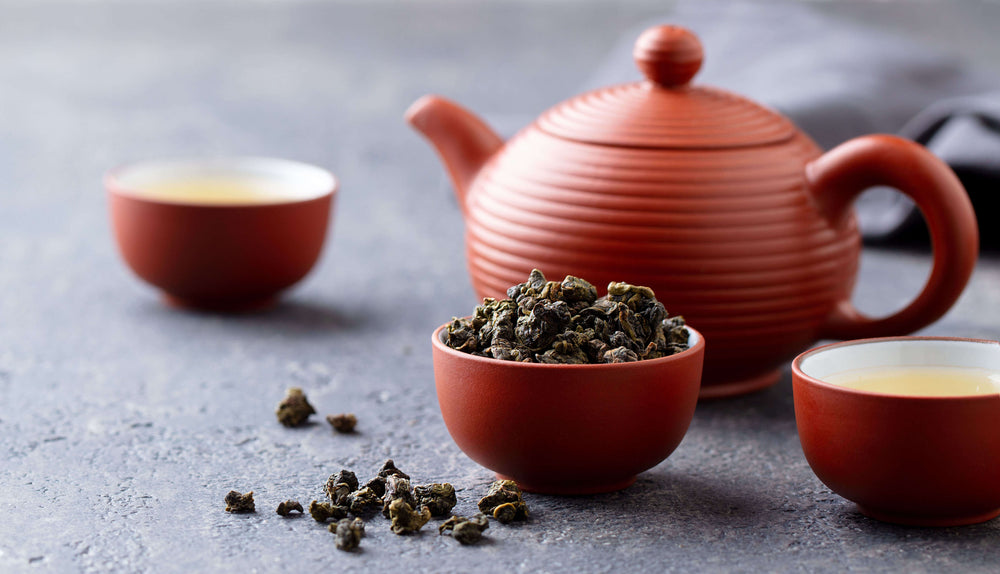
How Much Oolong Tea Is Safe to Drink?
There are no guidelines on how much oolong tea is too much, so as in everything moderation is always a good rule to follow. If you are drinking caffeinated oolong tea, however, or any caffeinated beverage, you should keep an eye on how much caffeine you’re ingesting, especially if you have blood pressure concerns. However, if you want to reap the benefits of oolong tea, having two or more cups a day should be an absolutely excellent practice to engage in. If you add in milk and/or sugar, be mindful of the extra fat and sugars that you are taking in.
While there is no reason pregnant women should be concerned about drinking oolong tea, they may want to be mindful of caffeine levels. We always recommend checking with your doctor about drinking caffeine during pregnancy.
Oolong Tea Recipes
After you’ve enjoyed oolong tea made the traditional way, mix it up with some fun recipes!
Thanks for reading up on the unique characteristics of oolong tea. If you’re not already a fan, we hope you’ll give one or two of these fantastic teas a try, and that at least you’ve learned a little oolong the way!




